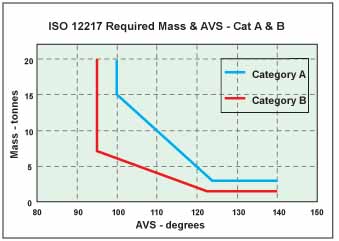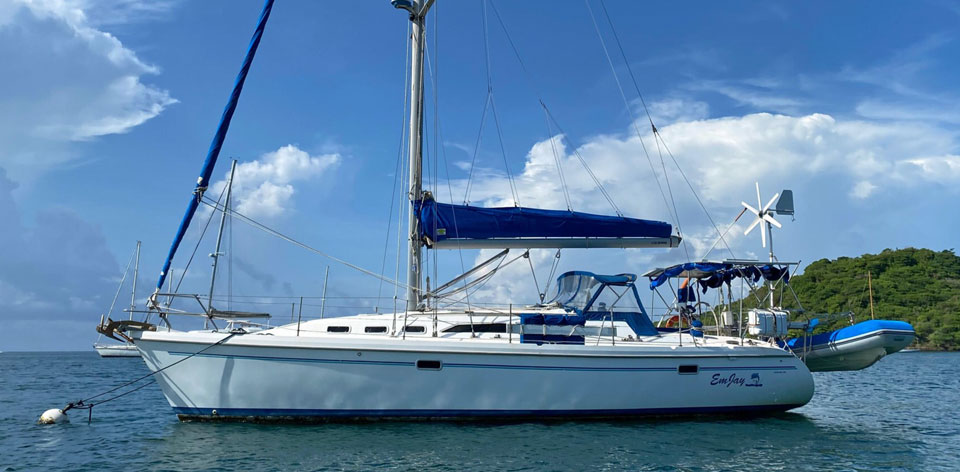A Guide to Sailboat Design Categories, STIX & Dynamic Stability
In a Nutshell
When purchasing a sailboat in Europe, a CE marking indicates its suitability for specific conditions through four design categories: A (Ocean), B (Offshore), C (Inshore), and D (Sheltered Waters). These categories are determined by the boat's ability to withstand certain wind forces and wave heights.
Beyond these basic parameters, the stability of a boat is assessed using the Stability Index (STIX), a numerical score derived from a comprehensive formula that includes the boat's dimensions and its ability to recover from a capsize or knockdown. Together, these standards provide a clear framework for understanding a sailboat's intended use and inherent seaworthiness, ensuring safety for both new owners and experienced sailors.
Table of Contents
What Are the Sailboat Design Categories?
How is a Sailboat's Stability Assessed?
What Are the Sailboat Design Categories?
Since the introduction of the Recreational Craft Directive (RCD) in 1998, all new recreational boats sold in the European Union between 2.5 and 24 metres must be certified with a CE marking and assigned one of four design categories. This classification system, which also applies to boats built elsewhere for export to Europe, gives an objective measure of a vessel's design limitations.
The four categories are defined primarily by the maximum wind force and significant wave height the boat is designed to handle. A boat's categorization is not based on its length or displacement alone, but on a holistic assessment of its structure, stability, and handling characteristics.
The Four Categories: A, B, C & D
| Category | Description | Significant Wave Height | Wind Force (Beaufort) |
|---|---|---|---|
| A | Ocean Designed for extended voyages where conditions may exceed Force 8 winds & 4m significant wave heights, and the vessel must be largely self-sufficient. |
Exceeding 4m | Exceeding 8 |
| B | Offshore Designed for offshore voyages where conditions may include winds up to and including Force 8 and significant wave heights up to and including 4m. |
Up to and including 4m | Up to and including 8 |
| C | Inshore Designed for sailing in coastal waters, large bays, estuaries, lakes and rivers where conditions may include winds up to and wind Force 6 & significant wave heights up to and including 2m. |
Up to and including 2m | Up to and including 6 |
| D | Sheltered Waters Designed for sailing on small lakes, rivers and canals where conditions up to and wind F4 and significant wave heights up to, and including 0.3m may be experienced. |
Up to and including 0.3m | Up to and including 4 |
 The difference between Design Categories A & B
The difference between Design Categories A & BHow is a Sailboat's Stability Assessed?
Beyond the basic wind and wave parameters of the RCD categories, a sailboat's seaworthiness is evaluated through detailed stability assessments. This is where the concept of the Stability Index (STIX) comes into play, as defined by the International Standards Organisation (ISO) under ISO 12217.
STIX is a numerical index that scores a boat's stability on a scale from 5 to 50. A higher STIX value indicates greater seaworthiness. The calculation is complex and takes into account a variety of factors:
- Angle of Vanishing Stability (AVS): The point at which the boat can no longer right itself after being heeled.
- Displacement & Beam: The boat's weight relative to its length and width.
- Resistance to Down-flooding: The risk of water entering the boat through hatches or cockpit lockers.
- Recovery from Knockdown & Inversion: The boat's ability to recover from extreme heeling or a full capsize.
An important point to remember is that while a boat's design category gives you a general idea of its capabilities, the STIX score and AVS provide a much more precise measure of its inherent stability.
As an experienced ocean sailor, I’ve found these classifications to be invaluable. My own 38 footer, built before these regulations, has proven her seaworthiness on many offshore passages, but for anyone considering a modern boat, the CE marking and STIX rating offer a verifiable assurance of a vessel's design integrity. It's a critical piece of information that helps a sailor match a boat to their intended use and cruising grounds, from sheltered coastal waters to challenging ocean crossings.
Beyond the Numbers: Practical Implications for Sailors
While the design categories and Stability Index (STIX) provide a technical framework for a boat's capabilities, their importance extends to real-world considerations for owners and buyers.
Understanding UKCA Marking
For sailors in the UK, it is important to know about the UK Conformity Assessed (UKCA) marking. Since the UK left the European Union, new recreational craft sold in Great Britain (England, Scotland, and Wales) must be marked with the UKCA symbol, not the CE mark. The assessment process for the UKCA mark is based on regulations very similar to the RCD, so the four design categories remain the same. This ensures a consistent safety standard and helps avoid any confusion regarding the boat's classification.
Locating the Builder's Plate
For those considering a boat, you can find the design category and other key information on the Builder's Plate. This is a small, permanent plate usually fixed in the cockpit near the helm or on the transom. It lists the manufacturer, the boat's serial number, and its assigned design category, offering a quick and reliable way to verify the vessel's intended purpose.
Impact on Insurance and Resale
A boat's design category is not just a regulatory requirement; it also has financial implications. Many marine insurance providers base their premiums and coverage areas on the CE or UKCA category. An insurer may not provide cover for an offshore voyage to a vessel with only a Category C rating. Similarly, a boat's assigned category can affect its resale value, as a higher rating is generally seen as an indication of a more robust and capable vessel, attracting a wider pool of potential buyers.
You can learn more about the factors influencing seaworthiness in our article "Mastering Sailboat Design Ratios & Regulation for Performance & Safety".
This article was written by Dick McClary, RYA Yachtmaster and author of the RYA publications 'Offshore Sailing' and 'Fishing Afloat', member of The Yachting Journalists Association (YJA), and erstwhile member of the Ocean Cruising Club (OCC).
Frequently Asked Questions
Can a Category C boat sail offshore?
Can a Category C boat sail offshore?
While it is technically possible, it is not recommended. Category C boats are designed for inshore conditions with wind forces up to 6 and wave heights up to 2 meters. Venturing into more extreme conditions could compromise safety.
Is it possible to upgrade a boat to a higher design category?
Is it possible to upgrade a boat to a higher design category?
Generally, no. A boat's design category is based on its fundamental design, structure, and performance characteristics, which cannot be easily altered after construction.
What is the difference between a CE marking and a STIX score?
What is the difference between a CE marking and a STIX score?
The CE marking indicates that a boat complies with the RCD and has been assigned a design category. The STIX score is a specific numerical value used as part of the stability assessment to determine if a boat qualifies for a certain category.
Recent Articles
-
Yacht Clearance in the Caribbean: A Sailor's Guide
Nov 25, 25 07:13 AM
Navigating yacht clearance in the Caribbean is essential for a smooth sailing trip. This guide, written by an experienced sailor, explains the required papers, procedures & tips for a hassle-free expe… -
Beneteau Oceanis 36CC: Specs, Ratios & Cruising Suitability
Nov 25, 25 06:08 AM
Detailed analysis of the Beneteau Oceanis 36CC centre cockpit sailboat. Includes design ratios, full specifications, and practical assessment of its suitability for experienced offshore and liveaboard… -
Essential Boat Toilet Maintenance & Systems: A Sailor’s Guide
Nov 24, 25 01:17 PM
Master boat toilet maintenance, from manual sea heads to 12v electric systems. Get an experienced offshore sailor’s guide on avoiding clogs, leaks, & bad smells.














